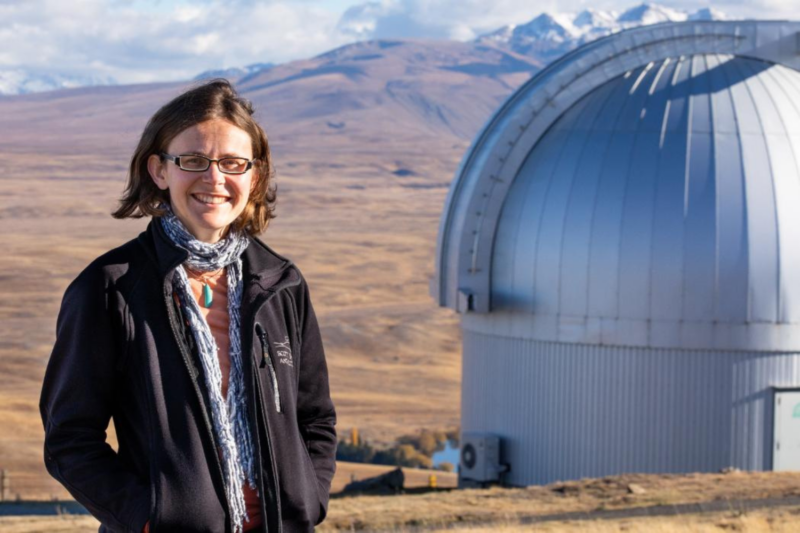Upsurge in Rocket Launches Could Impact the Ozone Layer

Rutherford Discovery Fellow and planetary scientist UC senior lecturer Dr Michele Bannister
University of Canterbury (UC) researchers have summarised the threats that future rocket launches would pose to Earth’s protective ozone layer, in a new review article published in the Journal of the Royal Society of New Zealand.
The ozone layer, which protects life on Earth from harmful ultraviolet (UV) rays from the sun, was severely damaged in the 1980s and 1990s due to chlorofluorocarbons (CFCs) — chemicals used in aerosols and refrigeration. Thanks to coordinated global action and legislation, the ozone layer is now on track to heal this century.
Rocket launches emit both gases and particulates that damage the ozone layer. Reactive chlorine, black carbon, and nitrogen oxides (among other species) are all emitted by contemporary rockets. New fuels like methane are yet to be measured.
“The current impact of rocket launches on the ozone layer is estimated to be small but has the potential to grow as companies and nations scale up their space programmes,” Associate Professor in Environmental Physics Dr Laura Revell says.
“Ozone recovery has been a global success story. We want to ensure that future rocket launches continue that sustainable recovery.”
Global annual launches grew from 90 to 190 in the past 5 years, largely in the Northern Hemisphere. The space industry is projected to grow more rapidly: financial estimates indicate the global space industry could grow to US$3.7 trillion by 2040.
“Rockets are a perfect example of a ‘charismatic technology’ – where the promise of what the technology can enable drives deep emotional investment – extending far beyond what the technology also affects,” Rutherford Discovery Fellow and planetary scientist UC senior lecturer Dr Michele Bannister says.
Rocket fuel emissions are currently unregulated, both in Aotearoa New Zealand and internationally.
UC Master’s student Tyler Brown, who was involved in the research, says Aotearoa New Zealand is uniquely positioned to both lead and participate in this field. “New Zealand’s role as a major player in the global launch industry means we can help steer the conversation. We stand to benefit enormously from additional growth in our domestic space industry, and with that comes the opportunity to ensure that global activities are sustainable for the planet as a whole.”
The review lays out detailed plans of action for companies and for the ozone research community, with a call for coordinated global action to protect the upper atmosphere environment. Actions that companies can take include measuring the emissions of launch vehicles on the test stand and in-situ during flight, making that data available to researchers, and putting effects on ozone into industry best-practise rocket design and development.
“The international ozone research community has a strong history of measuring atmospheric ozone and developing models to understand how human activities could impact this critical layer of our atmosphere. By working with launch providers, we are well-placed to figure out what impacts we might see”, says Dr Revell.
“Rockets have exciting potential to enable industrial-level access to near-Earth space, and exploration throughout the Solar System. Creating sustainable global rocket launches is going to take coordination across aerospace companies, scientists, and governments: it is achievable, but we need to start now,” says Dr Bannister. “This is our chance to get ahead of the game.”

 China
China